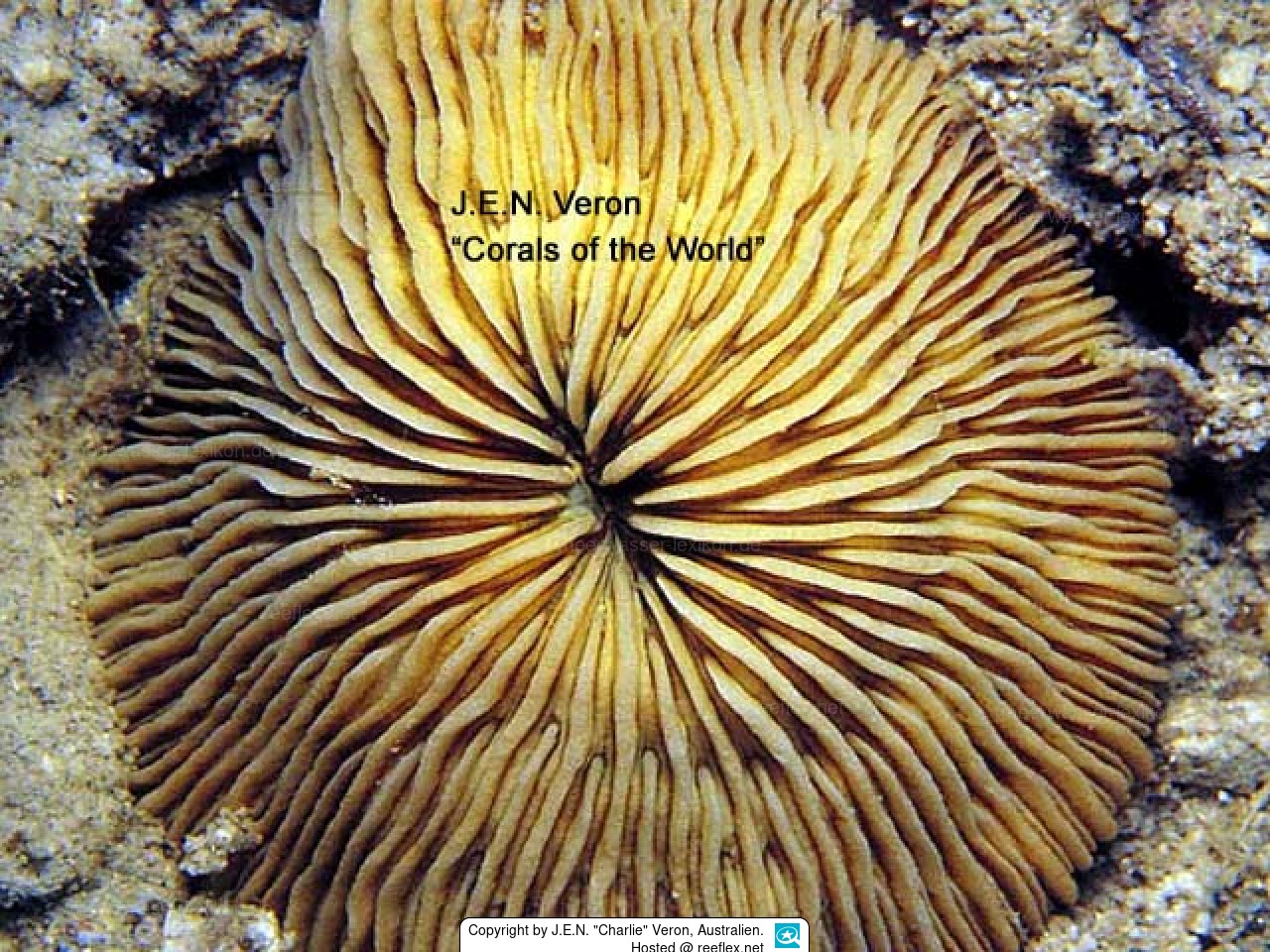Info
Similar Species: Cycloseris tenuis. Cycloseris cyclolites is more strongly dome-shaped and septa around the mouth are less exsert. See also C. erosa and Fungia granulosa which are larger and thicker.
Synonyms:
Cycloseris marginata (Boschma, 1923)
Fungia (Cycloseris) costulata Ortmann, 1889
Fungia (Cycloseris) halophila Felix, 1915 †
Fungia (Cycloseris) wanneri Felix, 1921 †
Fungia costulata Ortmann, 1889
Fungia doederleini Yabe & Sugiyama, 1941
Fungia halophila Felix, 1915 †
Fungia marginata Boschma, 1923
Fungia sibogae Van Der Horst, 1921
Fungia wanneri Felix, 1921 †
Classification: Biota > Animalia (Kingdom) > Cnidaria (Phylum) > Anthozoa (Class) > Hexacorallia (Subclass) > Scleractinia (Order) > Fungiidae (Family) > Cycloseris (Genus) > Cycloseris costulata (Species)







 Dr. John Edward Norwood "Charlie" Veron, Australien, Australien
Dr. John Edward Norwood "Charlie" Veron, Australien, Australien















